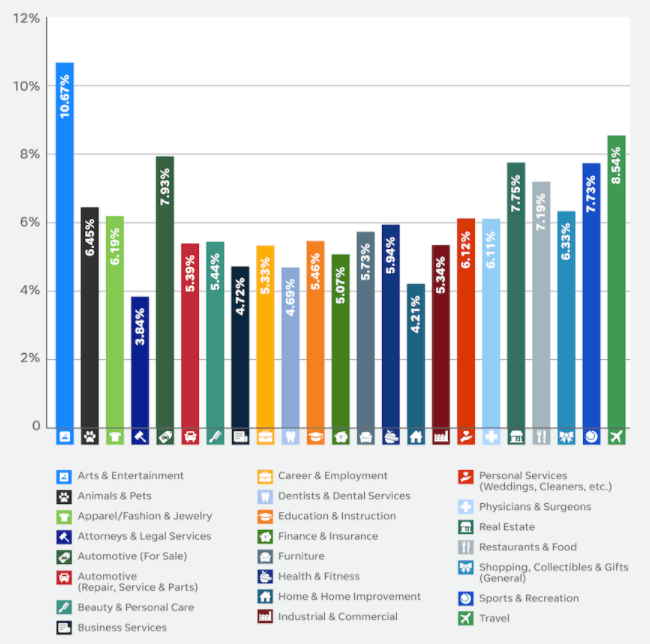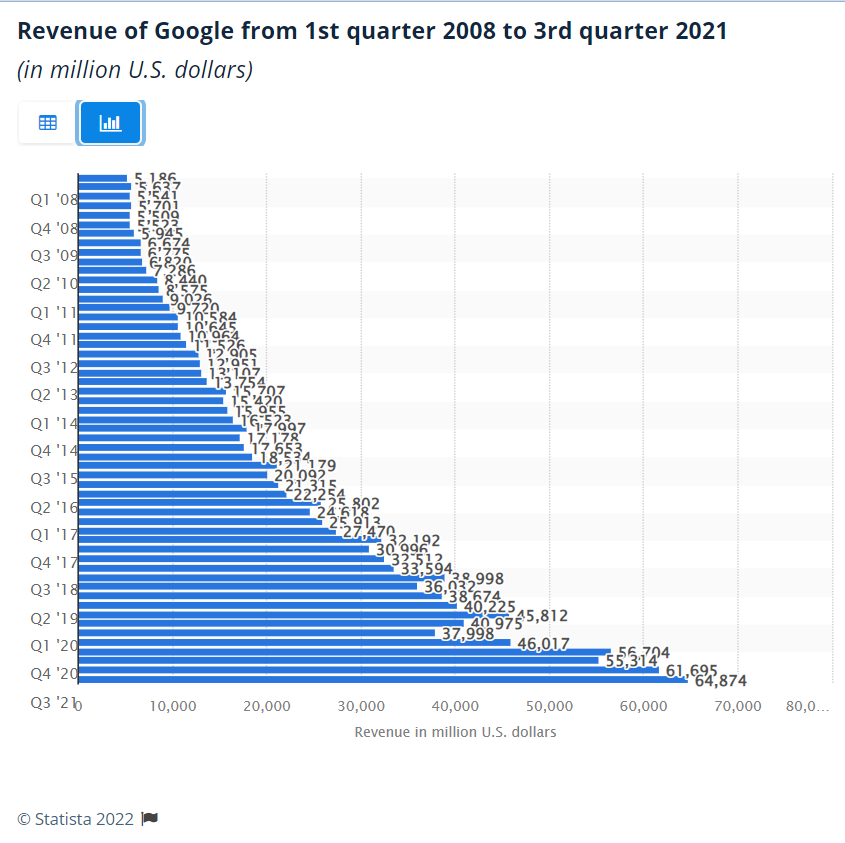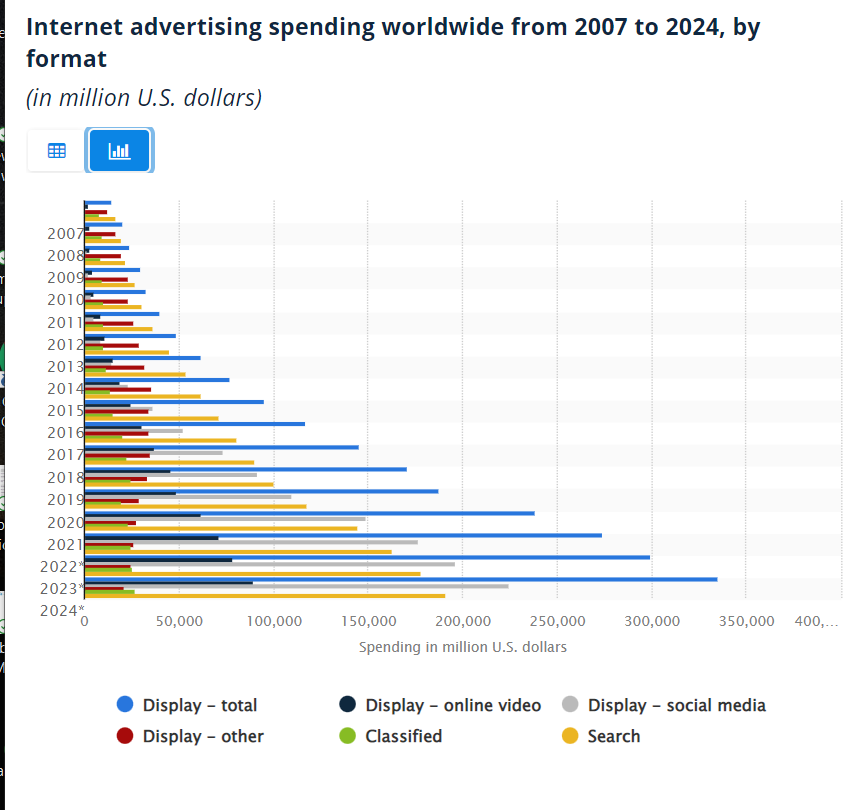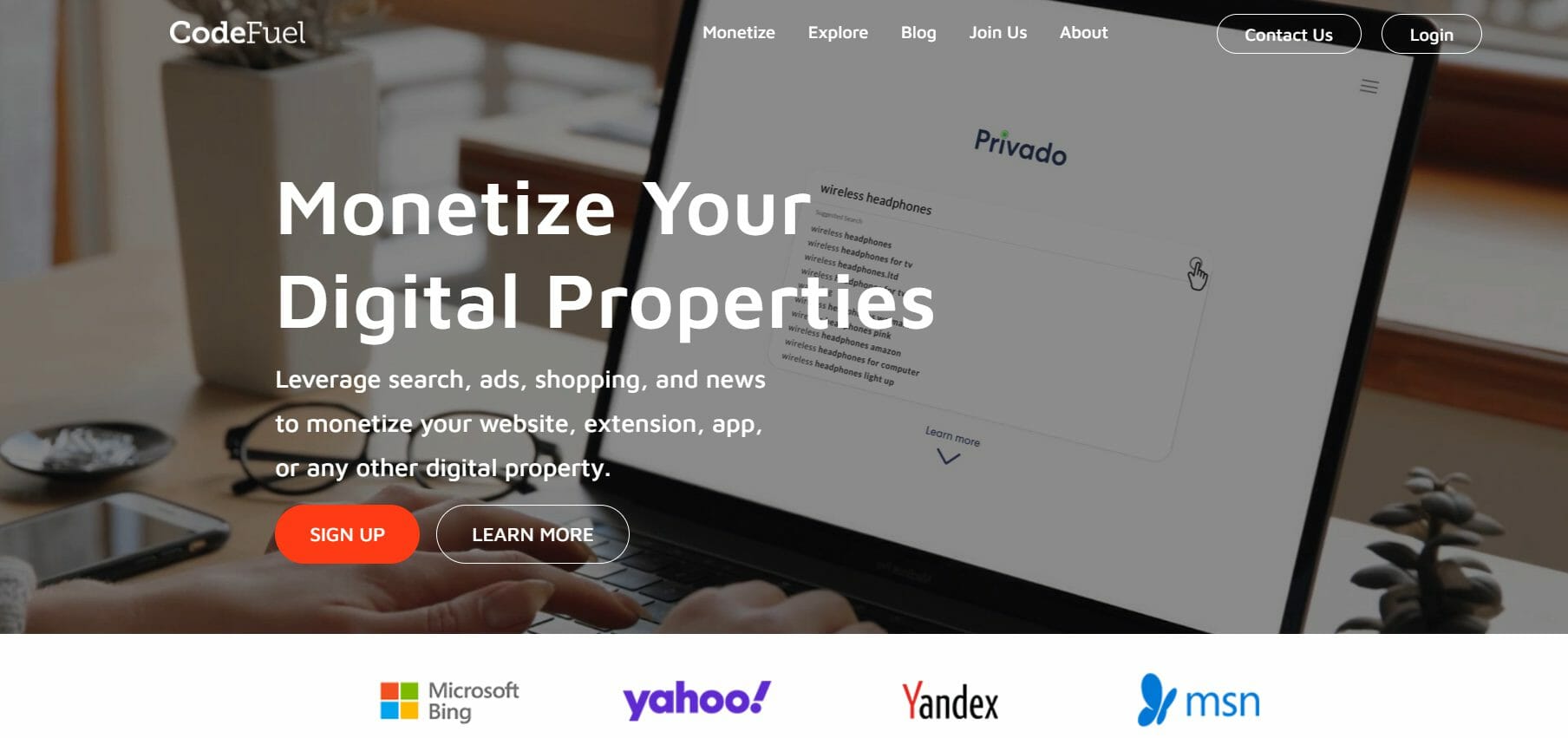
What is a Supply-Side Platform – Examples and Gains for Publlishers
Supply-Side Platforms (SSPs) are a critical element of today’s advertising technology (adtech) tools and one of the most widely used aspects of programmatic advertising. Learn everything you need to know about SSPs, who is the primary user of this technology, how it works, and its pros and cons.
In this post
What Are Supply-Side Platforms (SSPs)?
Supply-Side Platforms, also called Sell-Side Platforms, are a type of adtech software system employed since the late 2000s by digital advertising publishers to manage and distribute their ad inventories as efficiently as possible. SSPs help publishers offer the ads to advertisers using a Demand-Side Platform (DSP).
SSPs and DSPs are two sides of the same technology: programmatic advertising, which automates numerous aspects of digital advertising, such as purchasing and placing ads through Real-Time Bidding (RTB), according to the criteria and parameters set by publishers and advertisers (e.g., target audience characteristics, channels, etc.)
How Do Supply-Side Platforms Work?
Although SSPs can sell a publisher’s ad inventory directly to advertisers or ad networks, the most common transaction is through RTB auctions. Here’s how this process works:
|
Infographic
|
Main Features of an SSP
SSPs provide an essential service to publishers with ad inventories to sell, helping simplify and expand the ad selling process to a greater number of advertisers. This programmatic approach has replaced traditional in-person meetings between advertisers and publishers to negotiate advertising contracts.
Here’s how SSPs support publishers and the ad selling process.
-
In Supporting the Ad Selling Process
One of the primary benefits of an SSP is the ability to manage ad inventories of any size and enable publishers to complete advertising arrangements with dozens of potential buyers without having to meet and sign contracts with each one individually.
-
In Supporting Publishers
SSPs let publishers automatically sell ads to multiple ad exchanges and ad networks, making it a more efficient approach than the traditional demand waterfall (e.g., offering inventory to ad exchanges one by one until a bid is accepted).
SSPs also possess tracking and analytics features, serving as crucial sources of information for publishers to gauge the effectiveness of their ad campaigns and obtain accurate data regarding audience and impressions.
Main Components of an SSP
Supply-Side Platforms comprise five essential elements: the backend and infrastructure, integrations with other adtech platforms, incorporated ad exchange functionality, data tracking, and a reporting database.
-
Backend and Infrastructure
No software system functions without a robust backend and supporting infrastructure, and SSPs are no exception. SSP backend components are typically hosted on another party’s hosting infrastructure, such as Amazon Web Services (AWS).
-
Integrations
SSPs are designed to integrate with other adtech platforms and systems to help sell a publisher’s ad inventory (e.g., integrations with DSPs, ad servers, ad exchanges, etc.).
They can also feature integrations with data management platforms (DMPs), which collect first-, second-, and third-party data, organize the data into segments for improved targeting and help publishers maximize revenue.
-
Ad Exchange
One of the critical functions of an SSP is its incorporated ad exchange functionality, helping publishers connect to an advertiser’s DSP directly. This function helps facilitate direct deals between advertisers and publishers, providing an alternative to classic external ad exchanges.
-
Trackers
SSPs use trackers to collect data regarding the publisher’s website and its audience. They collect demographic and behavioral data, which is then processed to create a user profile for each visitor. Publishers can use these user profiles to determine audience trends and improve the targeting of their ad strategies.
-
Reporting Database
Part of the data collected by trackers goes to a reporting database, which automatically generates analytics reports measuring the performance and effectiveness of each ad in the inventory: fill rates, impressions, clicks, etc.
How Do SSP Support the Ad Selling Process?
SSPs support the ad selling process in four critical ways:
- RTB Transactions: SSPs and RTBs can automate selling a publisher’s ad space to an ad exchange, allowing publishers to sell more ads to more platforms.
- Ad Network Relevancy: An SSP can filter and select only the most relevant ad networks for the publisher’s inventory.
- Ad Request Optimization: An SSP sells individual ad impressions and shows publishers who buys their ad inventory at the impression level. In turn, publishers control their ad inventory and can optimize their ad requests anytime.
- Frequency capping: SSPs and DSPs can track the number of times a specific visitor has seen a specific ad. This feature is critical for advertisers who want to implement frequency capping: limiting the number of times a visitor can see the same ad before cycling to a different ad.
Benefits of Using SSPs
Supply-Side Platforms offer many features to publishers, and taking advantage of them grants many benefits. Here are the primary reasons you should consider using an SSP for your ad campaign.
-
Increased Advertising Efficiency
The most evident benefit of employing an SSP is the immediate beneficial effect on your ad fill rates. The fill rate is calculated using the number of filled ad spaces in a publisher’s inventory and comparing it with the number of vacant spaces. The higher the fill rate, the fewer vacant ad spaces, resulting in increased revenue.
An SSP can ensure the sale of all available ad spaces to the highest bidders, optimizing advertising efficiency by increasing the fill rate and maximizing the revenue per ad space. Many SSPs also come with integrated brand safety tools, preventing malicious advertisers from serving your ads aggressively or in a manner that harms user experience (UX) and keeping the quality of your ads as high as possible.
-
Expanding Your Ad Campaign’s Reach.
In the past, publishers often offered ad space at severely reduced prices to fill the ad inventory. Although this method worked to sell ads, it was inefficient as the set price was typically too low to be profitable.
Supply-Side Platforms prevent publishers from resorting to these methods by establishing a price floor: a minimum value under which no bids will be accepted. However, if your ad campaign features new and exceptional content, SSPs can be adapted and offer a new, appropriate price point. This feature ensures that new campaigns get maximum reach, allowing publishers to prioritize expansion instead of profit optimization when needed.
-
Better Revenue Yield
The amount of revenue earned from ads is referred to as yield or ad yield. The primary purpose of an SSP is to select the best bid prices for your ads and optimize ad displays to minimize fatigue (e.g., displaying the same ads over a long period). However, it isn’t designed to pick the highest bidder every time, as the highest price isn’t necessarily coming from the most relevant advertiser.
For example, an SSP will ignore an advertiser in a different geographic area with content that doesn’t match any of your requirements, even if it were to offer the highest CPM bid.
Instead, SSPs consider your needs and requirements and attempt to match your content with the most relevant advertisers. They will only look for the best prices within these parameters, resulting in a better and more optimized yield.
Challenges of Using SSPs
Although SSPs offer many benefits to publishers, it is critical to remain aware of the challenges involved in their use. Here are some of the most prominent.
-
SSP Market Fragmentation
The global SSP market is divided into various segments, depending on the region, industry, business size, and applications. For example, region segmentation includes Europe, North America, South America, Asia-Pacific (APAC), and the Middle East and Africa (MEA), whereas industry segments include education, manufacturing, IT, telecoms, and finance.
One of the biggest challenges of using SSPs is finding the right one for your region, industry, applications, and specific needs.
-
Complexity
Although finding the right SSP can help you reduce the complexity of managing and selling ads to advertisers, the nature of programmatic advertising means that changing small details may sometimes require interacting with multiple options and interfaces.
Consequently, many SSP solutions introduce their own degree of complexity, making it more difficult to manage your ad inventory if their workflows aren’t efficient or intuitive. The only way to ensure a particular SSP works for you is to try it and determine whether it can help you work more efficiently.
-
Service Costs
Although every platform offers its own pricing plans, most charge a percentage based on the total ad spend amount. Average rates vary between 15% and 35%. However, each SSP may charge additional fees for extra services such as fraud detection, improved viewability, and brand safety tools, potentially increasing the total service costs to 30-50% of the ad spend.
Where Do SSPs Sit in the Online Advertising Ecosystem?
The online advertising ecosystem between advertisers and publishers comprises numerous elements: DSPs, media agencies, ad networks and exchanges, ad servers, data suppliers, and other smaller elements.
Supply-side platforms are one of the elements closest to the publishers. They help publishers reach advertisers by directly reaching ad exchanges, ad networks, DSPs, and DMPs.
SSP vs. DSP
SSPs should not be confused with Demand-Side Platforms (DSPs). A DSP is a software platform designed to help advertisers buy ads from publishers across multiple ad exchanges. In other words, a DSP is to an advertiser what an SSP is to a publisher, fulfilling the same essential role; technology that helps advertisers and publishers connect and reach deals on ad spaces.
Examples of Supply-Side Platforms
Here are some of the top SSPs on today’s market and what unique value propositions they offer.
-
Google Ad Manager
Google Ad Manager is unique for being both a Supply-Side Platform and an ad exchange, combining the features and services of both platform types under the same roof. Google Ad Manager is certified by the Trustworthy Accountability Group as a platform safe from piracy, fraud, malware, and other risks to brand safety.
Ads offered on Google Ad Manager are subjected to the unified first-price auction system, where the winning bidder must pay the bid with the highest price. The service also offers a complete suite of management tools for video ads, native ads, and other formats. Additionally, using Google Ad Manager is free to publishers with over 5 million monthly page views.
-
OpenX
OpenX is one of the largest and best-performing SSPs available today, consistently ranking among the top 10 options for publishers. It has access to over 30,000 top-rated advertisers and provides customers with a wide range of analytics tools and custom reports.
Due to the highly sought-after nature of its advertisers, OpenX is only open to publishers with 10 million monthly page views.
-
Magnite
Formerly known as Rubicon Project, Magnite is one of the oldest and most well-established Supply-Side Platforms. Magnite has offered its services to publishers since its foundation in 2007, being one of the most consistent top performers and partnering with some of the world’s largest clients, such as Fox, Discovery, Hulu, and Disney.
Magnite is well-known for offering a wide selection of static and dynamic ad formats, fitting virtually any publisher’s ad space. They also offer a privacy-friendly platform, compliant with the most prominent regional regulations (e.g., GDPR, CCPA), helping improve worldwide reach.
-
PubMatic
PubMatic is another older and well-established SSP, established in 2006. PubMatic’s services are trusted by high-profile clients such as Verizon, Dictionary.com, and Electronic Arts.
With access to over 400 DSPs, exchanges, and networks, numerous configuration options and controls for publishers, and an easy-to-use interface, PubMatic is often described as one of the best SSPs to maximize ad yield. The company also uses moderation tools to maintain ad quality standards, ensuring only the best-performing content is served to publishers.
-
Xandr
Xandr, known as AppNexus until 2018, is a multi-faceted adtech company offering an SSP, an ad exchange, a DSP (Xandr Invest), and an ad curation platform (Xandr Curate). Monetization is open to publishers with a minimum of 10 million monthly page views.
Xandr’s monetization schemes primarily focus on header bidding and television advertising (e.g., OTT, Connected TV). They offer an exclusive private marketplace exchange to publishers with a unique inventory, allowing them to increase the value of their ad inventory and offer their ad slots to a curated selection of partners.
Alternatives of Supply-Side Platforms
Although SSPs offer many valuable features to publishers, top-performing platforms often have strict requirements that can be challenging to meet. Here are a few solutions if you’re looking for alternatives to the most common SSPs to help you monetize your content.
-
CodeFuel
CodeFuel serves as an alternative to SSPs and DSPs by offering tools to help publishers grow engagement and increase their website’s value through website performance optimization and the creation of new revenue channels.
For instance, CodeFuel offers ways to implement or optimize the monetization of your website, mobile apps, or search engine experience, helping you engage with more users and increase your yield.
-
Amazon Publisher Services (APS)
Amazon Publisher Services (APS) Publishers is Amazon’s unified ad marketplace for publishers looking to display ads on the retail giant’s website. It features server-to-server bidding integrations and a highly responsive, centralized dashboard. Although an Amazon account is required to use APS, no fees are required.
-
Bing for Partners
Microsoft’s search engine offers a partnership program with advantageous features for publishers, such as ad syndication (Bing ads on your website), Bing search engine ads, and cross-device compatibility (responsive and optimized results on PC, smartphones, and tablets).
FAQs
What is a Data Management Platform?
A Data Management Platform (DMP) is another aspect of programmatic advertising. DMPs collect various types of data from advertising campaigns, websites, and users, storing and categorizing it to provide relevant insights to advertisers and publishers. DMPs achieve these insights by building personalized user profiles, which can be used to determine trends and help improve the efficiency of an ad campaign.
How does header bidding work?
Header bidding is a function incorporated into most SSPs. They allow publishers to receive bids from multiple advertiser DSPs simultaneously. Header bidding can significantly help a publisher optimize their yield as it helps them visualize how much each ad is worth to a wide range of advertisers in a short period.
How can price floors help with yield optimization?
Most SSPs let publishers set price floors as a way to maintain control over the pricing of their inventory. The primary purpose of a price floor is to let publishers not allow the sale of an ad under a specific price. This type of price floor is referred to as a hard price floor (HPF).
For example, if you set an ad’s HPF at $4.50, bidders offering less than $4.50 CPM (e.g., $4.00 and $4.19) will be automatically rejected.
What is a Data Management Platform?
A Data Management Platform (DMP) is another aspect of programmatic advertising. DMPs collect various types of data from advertising campaigns, websites, and users, storing and categorizing it to provide relevant insights to advertisers and publishers. DMPs achieve these insights by building personalized user profiles, which can be used to determine trends and help improve the efficiency of an ad campaign.
How does header bidding work?
Header bidding is a function incorporated into most SSPs. They allow publishers to receive bids from multiple advertiser DSPs simultaneously. Header bidding can significantly help a publisher optimize their yield as it helps them visualize how much each ad is worth to a wide range of advertisers in a short period.
How can price floors help with yield optimization?
Most SSPs let publishers set price floors as a way to maintain control over the pricing of their inventory. The primary purpose of a price floor is to let publishers not allow the sale of an ad under a specific price. This type of price floor is referred to as a hard price floor (HPF).
For example, if you set an ad’s HPF at $4.50, bidders offering less than $4.50 CPM (e.g., $4.00 and $4.19) will be automatically rejected.
Need Help Implementing an SSP? CodeFuel Can Help You
If you’re looking for help choosing, implementing, or configuring a Supply-Side Platform for your website, CodeFuel can help. Our dedicated team of experts can provide the guidance you need to optimize your website’s monetization and maximize your ad revenue yield. Visit our website today for more information.





































